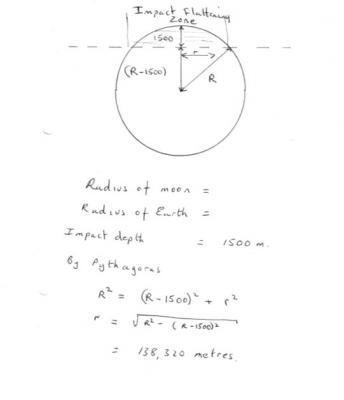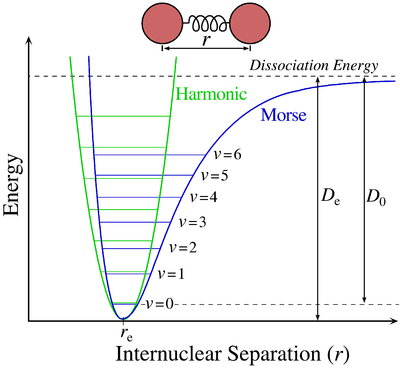-
Posts
17639 -
Joined
-
Last visited
-
Days Won
93
Content Type
Profiles
Forums
Events
Everything posted by studiot
-
Those values of epsilon and mu, along with the fact that in free space the electric wave is in phase with the magnetic wave also lead to the impedance of free space being 377 ohms. We could equally well ask why this value.
-
sunshaker, you might find this interesting reading http://www.angelfire.com/rnb/pp0/plasma2.html
-
+1 "A rose is still a rose by any other name." This does not mean I endorse everything Peter says.
-
Why can't you say it? You , yourself just said it.
-

Help with Contact Mechanics between Two Spheres
studiot replied to aricleather's topic in Homework Help
Contact Mechanics? 7th grade? Gosh that's wa...aay too complicated. I think a knowledge of Pythagoras will suffice. Not to mention that it is wholely inappropriate for your question. Contact mechanics refers to the contact of solid bodies, and the Earth has a lot of water to land on. When you do mathematical modelling, which is what you are attempting, you make assumptions as well as gathering data. Required data. Radius of Moon Radius of Earth Total population of earth. Population density map, you can measure areas on. This last part is important since maps always distort something and you need one that does not distort area. % of Earth's surface covered by water. Now I am going to assume that the impact will penetrate a depth of 1.5 kilometres or 1500 metres. If the impact is on land, not water. We can test the validy of this assumption later and alter it if necessary, but is is reasonable. The emboldened condition gives us our first statistical question/calculation. The % of the earth's suface that is land gives a (partial) probability that the imact will hit land and penetrate my 1500m Now look at my diagram. I have left some data for you to find out. You can see the impact zone where the Moon hits as the shaded area above the dashed line. The diagram also shows some simple geometry that will calculate the radius of this flattened area, using Pythagoras. I make that radius 138320 metres. You will need to calculate the area. This is a good deal less than the radius of the Moon which gives the radius of largest flattened area that could be made. So you have an estimate of the flattened area. Now your chances of being flattened depends upon the population density where the Moon hits. Obviously a strike on top of the Himalayas or central Australia will not kill as many people as a direct hit on the east coast of the USA. So divide you population densities into bands and get an area for each band from your population density map. These areas can be converted into (partial) probabilities of a kill. How does this sound for a working model? Run it past your tutor. -
I think pretty well all mathematicians from Euclid on would sympathise with that view, if we amend it to 'fully describe' or 'decribe completely'. In particular the beginning of 'The Elements' makes that quite plain. Have you ever seen the beginning set out? It makes interesting reading. But this thread and its question was asked is the Physics forum, not the Philosophy one. I think the difference between Science and Philosophy is that good Science includes a statement of limitation. Philosophy tries to be all embracing and, in my view, sometimes ties itself in knots as a result.
-
Peter, perhaps I misunderstood what you were saying here. I have not seen the book to which you refer so I don't know the context, or who said exactly what. I am not sure where you are reporting Weyl's words verbatim and where you are adding your interpretation. In particular, 'continuum' and 'continuum mechanics' have particular meanings in applied maths. As far as I can see, the term 'emergent' is subjective, not the result of a chain of reasoning. All I know of Weyl is some pretty well reasoned maths, leading for instance to the tensor I mentioned. This tensor definitely includes time as a proper variable.
-
All values of energy are well defined. The point is that some are accessible and some inaccessible to the system. These correspond to your 'proper functions'.
-
It's actually a stronger condition than that. Objects loose gravitational potential energy when they fall, or get closer to the centre. This loss of potential is exactly matched by the gain in some other sort of energy such as kinetic energy. Conversely when an object is lifted up it gains gravitational potential energy. Yes I said lifted up, no object will rise of its own accord without some agent (force driving it). The gain in potential energy is then exactly equal to the work done by this force. In either situation, energy conservation is obeyed.
-

Magnets receiving and transmitting radiowaves?
studiot replied to Maximiliano's topic in Engineering
No, they are too different. Some animals (eg homing pigeons) have magnetic sensors in their brains that respond to changes in the Earth's mangetic field. that is how they navigate. They can be disoriented by strong radio (ie magnetic) signals. I don't think they have found anything similar in humans, though someone else may know more. -
You should study ferrofluid magnets. http://en.wikipedia.org/wiki/Ferrofluid
-
You need to specify a bit more than this. How come the proton is moving in the x direction, what causes this?
-

Rearranging equations with square roots...
studiot replied to shaneo's topic in Linear Algebra and Group Theory
[math]v = \frac{1}{{2\pi }}\frac{{\sqrt {{k_f}} }}{m}[/math] cross multiply [math]2\pi mv = \sqrt {{k_f}} [/math] square both sides [math]{\left( {2\pi mv} \right)^2} = {k_f}[/math] can you complete it now? -
Yes that's the size of it, but remember that the solutions not only satisfy the equation but also the boundary conditions. There are many more solutions that satisfy the equation, but not the boundary conditions.
-
The Schrodinger equation can be writtern in terms of the Hamilton operator H(_) and the total energy operator E(_). [math]H(\psi ) = E(\psi )[/math] Now this is a partial differential equation that has functions as solutions. So any solution, [math]\psi [/math], is a function of the space variables in the original equation. As with any differential equation we pick out desired solutions by imposing boundary conditions. If these boundary conditions lead to a set of solutions only for discrete, separated values of E, that is they constrain E only to certain specific values (remember E is a scalar) then the solutions are called 'eignefunctions' and the values the 'eigenvalues'. Some boundary conditions, however, allow solutions, [math]\psi [/math], that can take any value of E (perhaps within certain min and max limitis). In this case there is a continuous spectrum and the solutions are not eigenfunctions. So if we take the so called Morse energy curve for a quantum oscillator (from Wikipedia) We see two regions in the graph. The Schrodinger equation applies to both parts. The lower part shows discrete separate energy levels getting closer together as we rise up the vertical axis, until there is a second region labelled 'dissociation energy' and a continuous emitted spectrum. The energy levels in the lower region correspond to eigensolutions. The continuous range of allowable energies in the upper region correspond to non eigensolutions.
-
Gosh what a silly question to set. So many variables (questions that could be asked) and such narrow categories. Are any of these categories measured against a scale? Characterisation: Is this situation a red emergency? amber? or just a warning? Just humans? Is is getting better? Is it a one off? Fundamental: Route? When? For how long? Could any more come this way? Any other sources?
-
I haven't checked the arithmetic but your figures are the right sides of the value I got for a 2" pipe. However do you not think your value for the 1.5" pipe is telling you that that flowrate is impractical for such a pipe?
-
A 2" pipe has a 1" radius and 1" is 1/12 feet, yes?
-
Well I found it really intriguing and thought provoking, once I got the hang of it, which was not until the first time through was nearly complete. I thought the technique employed art well, if subtly. I have a pre-computer age manual of such presentation techniques. However I don't think the quoted target audience would have the patience to make that effort. The one person I showed it to, has several degrees up to Msc and found it difficult to follow without explanation.
-
Try the arithmetic again. 500 cfm = 500 x 60 cuft/hour = 30,000 cfh v = 30000/(pi x (1/12)2) =ft per hour divide this by 5280 to get to mph.
-
Unusual presentation. Would this be an example of what MikeSmithCosmos called Art in Science?
-
Within limits, yes. If you tried to force the air into too small a pipe, say 1/16", you would probably not be able to do it - the resistance would be too great. And if you opened out the pipe too far. say 72", it would become a chamber and air would start to circulate as in the atmosphere.
-
You cannot change the volumetric flow rate (cuft/min) by changing the pipe size or air would accumulate somewhere (or worse appear out of nowhere). The volumetric flow rate Q = Area cross section times the velocity. Note for your units the area is in square feet and the velocity in ft/min. Your second question, what is the diameter change from a 2" pipe to a 3" pipe is surely (3"- 2") = 1"? You cannot calculate the flow within the adapter or about 3 diameters upstream or downstream by these methods.
-
[math]\Delta \Phi [/math] = [math]\frac{{2\tan \theta }}{L}[/math] Where delta_phi is the pipe diameter change, theta the flare angle of the adapter and L the pneumatic length of the adapter. Is this what you really want or would you like to explain your needs further?
-
Cu + 4HNO3 = Cu(NO3)2 + 2H2O + 2NO2



